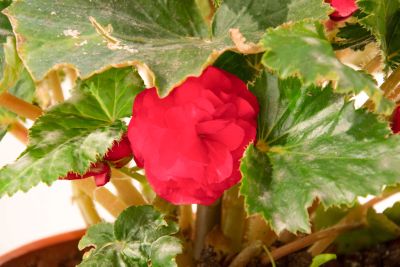Reasons for Begonia Leaf Curl
As with any garden question, the reason behind why begonia leaves are curling may be difficult to diagnose. A begonia with curled leaves may have been affected in a number of ways in order for this to occur. First, growers will need to carefully observe recent changes in water, fertilization, or even weather patterns. Each of these issues can cause begonia leaf curl.
Temperature – Since many begonia plants are native to tropical regions, curling begonia leaves may occur when plants have been exposed to wide temperature change. Ideally, the plants will grow best when temperatures do not fall below 60 F. (15 C.). Sudden periods of cool weather can certainly cause the appearance of the begonia plant to change.
Water/Fertilization – Begonia curl may also occur due to overwatering, underwatering, or overuse of plant fertilizer. Maintaining a consistent schedule of each of these garden tasks will help growers to better diagnose the cause of leaf curl.
If after close monitoring, none of these factors is the issue, there are some pest and disease-related causes to consider. Thrips, for example, are among the most common begonia pests which may cause leaves to curl. Many types of begonia plants are also susceptible to powdery mildew. Begonia leaf curl is often among the first symptoms. Beyond curling, gardeners will then begin to notice distinctive white patches on the leaves of the plant. Eventually, the disease may cause flowers and leaves to die back and fall from the plant. Other types of plant diseases, such as anthracnose, can be caused by fungi. Anthracnose in begonia plants is common. Curling of begonia leaves is often among the first noticeable symptoms of this issue as well. Inspect the leaves of the plant for signs of yellowing or brown spotted lesions. To help prevent this disease in begonias, remove any signs of infected plant material and make certain to avoid wetting the leaves while watering.
